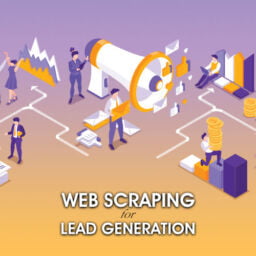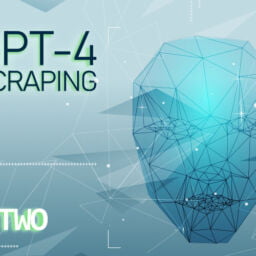
Market research helps businesses to make informed decisions and stay ahead of the competition. However, with the current evolving digital landscape, traditional data collection methods in marketing research are insufficient. Web scraping comes in handy to help you gather comprehensive and up-to-date information.
Let’s explore why web scraping is a powerful tool for market research data collection and the key elements you should consider when implementing it.
Market Research Data Collection Methods
Market research relies on various data collection methods to gather information and insights about the market, consumers, competitors, and industry trends. Here are ten ways of collecting market research data.
Surveys
Surveys involve gathering data through questionnaires or interviews. They can be conducted in person, over the phone, through email, or via online survey platforms. Surveys allow you to collect specific information from your targeted audience and measure opinions, preferences, behaviours, and demographics.
Interviews
Interviews are direct one-on-one or group discussions with individuals. You can conduct them face-to-face, over the phone, or through video conferencing. Interviews provide qualitative data and allow you to delve deeper into participants’ thoughts, experiences, and perceptions.
Focus Groups
They bring together a small group of 6-12 individuals to discuss specific topics or products. They are led by a moderator who facilitates the discussion and encourages participants to share their opinions, ideas, and feedback. Focus groups provide qualitative insights, foster group dynamics, and allow you to observe non-verbal cues.
Observational Research
This method allows you to observe and record real-life individuals’ behaviours, interactions, and activities in natural or controlled settings (in stores, public spaces, or through video recordings).
Mystery Shopping
Mystery shopping involves hiring individuals to pose as customers and evaluate the quality of products, services, or customer experiences. Mystery shoppers follow a predefined script and provide detailed feedback on their observations. This method helps your business assess the performance of its outlets or gather competitive intelligence.
Ethnographic Research
In this method, researchers immerse in the target audience’s natural environment to observe and understand their behaviours, needs, and cultural context.
Online Panels and Communities
They consist of pre-recruited individuals who have agreed to participate in research activities. You can engage panellists through online surveys, discussions, or product and concept testing. Online panels provide a convenient and accessible way to gather data from a specific target audience.
Secondary Data Collection
Secondary data collection involves gathering information from existing sources. This includes published reports, government publications, industry studies, academic research, market databases, and publicly available data. Secondary data can provide historical trends, industry benchmarks, and valuable background information to support primary research activities.
Social Media Monitoring
With the rise of social media platforms, monitoring online conversations and interactions has become an essential data collection method. Social media monitoring allows you to track mentions, hashtags, and discussions related to specific brands, products, or industry topics. It provides real-time insights into consumer sentiment, trends, and public opinion.
Website Analytics
Tools like Google Analytics help you collect data about website traffic, visitor behaviour and interactions, page views, bounce rates, and conversion rates. They allow you to gain insights into customer preferences, engagement levels, and user experience.
Each market research data collection method has its strengths and limitations. The choice depends on your research objectives, target audience, resources, and required data type. Often, we recommend using a combination of methods to gather comprehensive and actionable insights for market research.
Advantages of Web Scraping for Market Research
Web scraping is revolutionising data collection and analysis. It offers significant advantages for market research, including real-time data collection, large-scale data extraction, cost and time efficiency, access to diverse data sources, data enrichment and integration, automation and scalability, competitive intelligence, and analysis of unstructured data.
Web Scraping Use Cases for Market Research
In the market research industry, you can use web scraping to facilitate your activity and get better results (from competitor analysis and trends monitoring to pricing intelligence and lead generation). We identified eight major web scraping applications in marketing research, and here’s how they work.
Competitor analysis
You can design a custom web scraper to extract product information, pricing details, promotional offers, customer reviews, and other data from your competitor’s website. This information helps businesses identify market trends and define competitive offerings.
Trend monitoring
You can stay updated on market trends, emerging technologies, consumer preferences, and changing industry dynamics by scraping industry news sites, blogs, social media platforms, and forums.
Data aggregation
Web scraping is a practical tool for any market research company to create accurate market reports and forecasts about market size, industry statistics, competitor analysis, customer demographics, and other relevant metrics.
Pricing Intelligence
Another success factor in today’s global business is pricing. Market demand and supply are unstable while competition is reaching the highest levels. Web scraping and data mining are becoming the only way to remain competitive and flexible through price monitoring and dynamic pricing strategies. In a previous blog, we talked about pricing intelligence and how to analyse competitor pricing strategies, identify price fluctuations, detect pricing trends, and optimise your pricing decisions.
Product development
You can design a custom web scraper to extract product information, pricing details, promotional offers, customer reviews, and other data from your competitor’s website. This information helps businesses identify market trends and define competitive offerings.
Sentiment analysis
Web scraping can extract sentiment, customer reviews, and feedback from review websites, social media platforms, and online forums. This helps you discover consumer opinions, preferences, satisfaction levels, and areas for improvement.
Reputation management
Web scraping allows you to monitor online mentions, social media conversations, and customer reviews about one or more brands. You can identify potential issues, address customer concerns, and effectively manage your online reputation by tracking brand sentiment.
Lead generation
Web scraping can help you identify potential prospects for businesses. During your market research, you can scrape websites, directories, and social media platforms to collect contact information and industry-specific data you can then use for targeted marketing campaigns, customer segmentation, and sales prospecting. Lead generation can be time-consuming and requires specific skills and experience. However, you can use lead generation tools or services designed to automate the process and make sales steps faster and more effective.
Types of Data in Marketing Research
…and Website URL Examples
We saw how web scraping allows you to collect various data for market research purposes. The data type you need depends on the research objectives. We divided market data into eight categories, from price to news.
| DATA TYPES | DATA SOURCES EXAMPLES |
|---|---|
| Product information Product specifications, features, descriptions, pricing, availability, and variations. | Muti-vendor online marketplaces: Amazon Walmart Alibaba eBay Etsy |
| Pricing data Product prices, discounts, promotions, and price fluctuations over time. | E-commerce websites: Best Buy Target |
| Opinions Customer reviews, ratings, and feedback from websites, review platforms, and social media channels. | Review platforms: Yelp TripAdvisor Social media platforms: |
| Social media data Posts, comments, shares, and mentions related to specific products, brands, or industry topics. | Social media sites: |
| Competitor data Product catalogues, pricing information, promotional offers, customer reviews, and market positioning. | Competitors’ online store: Apple Samsung Ford |
| News and trends Insights into the latest industry news, market trends, emerging technologies, regulatory changes, and consumer behaviour from industry blogs, forums, publications, and news providers. | News websites: CNN BBC News Industry blogs: TechCrunch HubSpot |
| Demographic data Age, gender, location, occupation, cultural background, and family status from various sources, such as national census, sample survey, and registrations. | Census data: U.S. Census Bureau UK Office for National Statistics Italian Istituto Nazionale di Statistica (Istat) Eurostat |
| Website analytics data Traffic statistics, page views, bounce rates, conversion rates, and user behaviour. This data provides insights into website performance, user experience, and visitor engagement. | Analytics tools: Google Analytics SimilarWeb Matomo Piwik PRO |
| Public Relations (PR) Mentions and articles from news websites, press releases, and PR platforms to track media coverage, monitor brand reputation, and analyse the impact of PR efforts. | Press release platforms: PR Newswire Business Wire EIN Presswire Presswire |
| Reports data Background information, historical trends, industry benchmarks, and statistical data from market research reports, industry studies, and publicly available data sets. | Market research platforms: Statista MarketResearch.com Industry studies: W.E. Upjohn Institute for Employment Research Freedonia Group Data sets: Kaggle |
NOTE: When you conduct web scraping for market research, you should ensure compliance with legal and ethical guidelines, respect website terms of service, and consider data privacy regulations. The URLs provided are examples of popular websites and platforms. The actual URLs for specific data sources may vary depending on the target market, industry, and research requirements.
Web Scraping Techniques for Market Research
Web scraping helps you extract data from websites efficiently and effectively. You can use one or more techniques to support your market research activities.

- HTML parsing. You analyse the page source code and use parsing libraries like Beautiful Soup (Python) or Jsoup (Java) to navigate the HTML elements and extract the desired data.
- XPath extraction. It’s a language used to navigate XML documents, including HTML. With XPath, you can define paths to specific elements or attributes on a web page and extract data based on those paths. XPath is often used with libraries like lxml (Python) or HtmlAgilityPack (.NET) to scrape data.
- CSS selectors. They define patterns to target and select specific HTML elements based on their classes, IDs, attributes, or hierarchy. Libraries like BeautifulSoup (Python) or Nokogiri (Ruby) allow you to use CSS selectors for web scraping.
- API scraping. Some websites provide Application Programming Interfaces to allow developers to access and retrieve data in a structured format using Python, JavaScript, or Ruby.
- Reverse engineering APIs. They are internal APIs you can reverse-engineer to extract data when the websites don’t provide public APIs. This involves inspecting network requests made by the website, understanding the request-response structure, and replicating those requests to obtain data programmatically.
- Automated web browsing. Tools like Selenium, Puppeteer, or the WebRobot App can automatically browse websites and extract data. These tools simulate a web browser, allowing you to interact with dynamic websites that require JavaScript rendering. You can automate tasks like clicking buttons, filling out forms, and extracting data from the rendered page.
- Headless browsers. They are web kits and environments, such as PhantomJS (discontinued), Headless Chrome or Headless Firefox, used to scrape websites without seeing a browser UI. You can control them programmatically to navigate websites, execute JavaScript, and extract data.
Market Research Web Scraping Key Elements
When you extract data for market research, the insights must be correct. So, you must consider several key factors when choosing a data scraping solution, whether a web scraping service, a cloud-based SaaS or a self-service tool.
These elements tell you how suitable the data solution is for your marketing research project. A good web scraping service for market research is:
- Data quality-oriented. The service can extract the desired data accurately without significant errors or inconsistencies. Furthermore, it implements data cleansing and normalisation processes to ensure high-quality data.
- Scalable and performing. The service can handle large-scale scraping tasks efficiently, especially if you require scraping from numerous websites or need to extract large amounts of data. The scraping service offers high-speed data extraction, can handle concurrent requests, and has a reliable infrastructure to support your needs.
- Customisable and flexible. The web scraping solution can accommodate your specific requirements, such as scraping particular websites, extracting specific data fields, or implementing custom scraping logic to meet your unique market research needs.
- Compliant and ethical. The web scraping service operates within legal and ethical boundaries, respecting website terms of service, copyright laws, and data privacy regulations. A reputable service will prioritise compliance and have mechanisms to prevent unauthorised or unethical scraping activities.
- Reliable and stable. The data extraction company has a track record of consistent uptime, minimal service disruptions, and robust infrastructure. Consider factors such as customer reviews, testimonials, the service provider’s reputation in the market, and free trials.
- Support and maintenance-focused. The web scraping platform provides timely and responsive customer support to address any issues or questions that may arise. It offers regular updates, bug fixes and improvements to ensure a smooth, uninterrupted scraping experience.
- Secure and safe. The web scraping service has appropriate safeguards to prevent data breaches, unauthorised access, or misuse of the scraped data. It must follow industry best practices for data encryption, storage, and transmission.
- Balanced price. The web scraping service has a pricing model that aligns with your budget and expected return on investment (subscription fees, per-request charges, or data volume pricing).
- Integrable. The web scraping tool must be compatible with your existing systems and workflows (if any), such as data analysis tools, databases, or platforms. Look for services offering APIs or data export options that facilitate seamless integration.
- Reputable. The web scraping software should have positive reviews or case studies from existing clients to gauge their satisfaction with the service. So engage in discussions or seek recommendations from industry peers or market research professionals. Alternatively, you can test a demo or free trial.
- Problem solver. The web scraping app offers anti-blocking systems to avoid disruption or failure (Proxy Rotation to avoid IP-blocking, CAPTCHA-solving services or machine learning algorithms to overcome these challenges and improve scraping efficiency).
Your Next Step
Ready to unlock the power of web scraping for your market research? Get started today and empower your business with timely, comprehensive, and accurate market insights.
Contact us to start using web scraping for your next market research project.
Book a free consultation with data experts
Collect deeper data for your research
Do it in the easiest yet most innovative way with our DIY tool.
Disclaimer: Always respect user privacy and copyright, follow ethical data scraping practices, and abide by the terms and conditions of the websites or platforms you’re scraping data from, as unauthorized data extraction may lead to legal or privacy issues. Therefore, ensure that your data collection and analysis methods are compliant. Furthermore, data can be noisy, unstructured, and constantly changing. Therefore, use a tool or service that can handle the volume and variety of data from multiple web sources. This article is for information purposes only and not intended as legal advice. Consult a lawyer for complete knowledge of the local and international laws.
Featured image by rawpixel.com on Freepik


















[…] By Denis Giuffrè – WebRobot Marketing Big Data Data Analytics Market research […]
[…] data scraping from social media platforms and online forums can get insights about customer sentiment, popular destinations, travel experiences, and influencers. Such information supports you in […]
[…] companies worldwide exploit travel analytics for accurate demand forecasting. This point is particularly noteworthy for airlines and hotels, for which resource allocation and […]